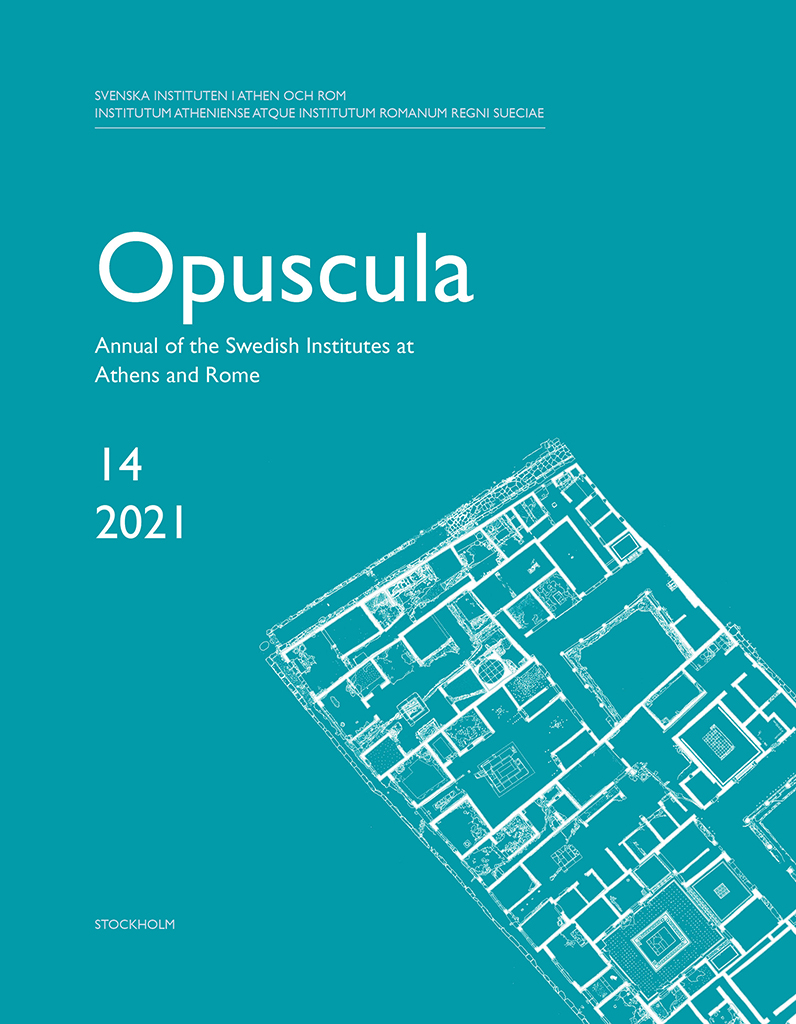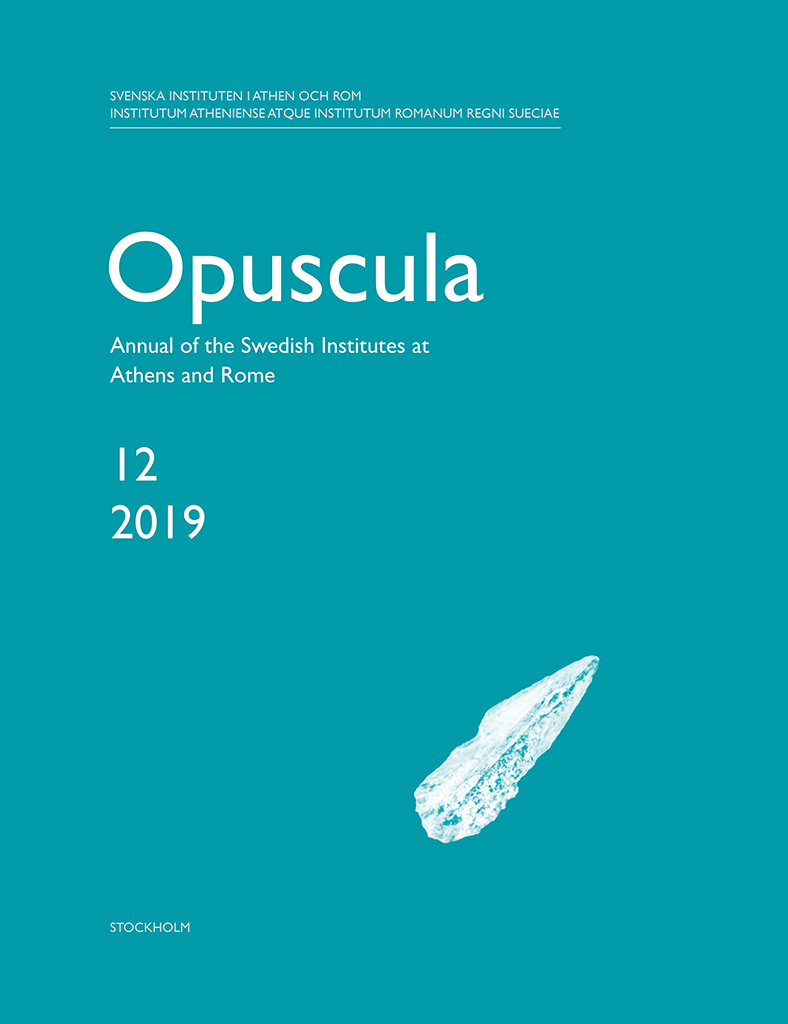Opuscula is published by the Swedish Institutes at Athens and Rome, with the aid of a grant from the Swedish Research Council. Distributed by Eddy.se AB. View journal at ERIH PLUS. All content available with open access. Ancestral and chthonic cults at Tenos By Nota Kourou (University of Athens, Greece) Abstract This paper presents the material evidence from two neighbouring Early Iron Age sites at Xobourgo on Tenos, identified as sacred places, and comments on their religious character and evolution. The first, conventionally named the Pro-Cyclopean Sanctuary, has a purely mortuary character. It starts in the Late Protogeometric period with an ancestral cult on a pebble platform over an empty grave, continues with a number of pyre pits inside enclosure walls, and ends up with a chthonic cult at an eschara in the Late Geometric period to be replaced by a small sacred oikos in the 7th century. The second starts as an open-air shrine, named the Pre-Thesmophorion Shrine, with an eschara and a protected place for storing pithoi, and it is turned into a Demeter sanctuary, a Thesmophorion, with a small temple in the Classical period. After considering the development and phases of both sites, it is claimed that…
Opuscula is published by the Swedish Institutes at Athens and Rome, with the aid of a grant from the Swedish Research Council. Distributed by Eddy.se AB. View journal at ERIH PLUS. All content available with open access. Greece and the Levant in the 10th–9th centuries BC. A view from Tel Rehov By Amihai Mazar (The Hebrew University of Jerusalem, Israel) & Nota Kourou (University of Athens, Greece) Abstract Tel Rehov in the Beth Shean Valley, northern Israel, yielded 14 Greek (mainly Euboean and Attic) pottery sherds from the Late Protogeometric to Middle Geometric periods. This is the largest number of Greek sherds from these periods found at a single site in the Southern Levant in stratigraphic contexts. Since the Tel Rehov strata, well-dated by a large number of 14C dates, yielded some of the richest assemblages of finds from the 10–9th centuries BC in this region, the Greek sherds provide an opportunity to examine both their absolute dating in context and to discuss the nature of the relations between the two regions. Six of the 14 sherds were published previously (Coldstream & Mazar 2003); in the present paper, we describe the finds from Tel Rehov and other sites in the…


